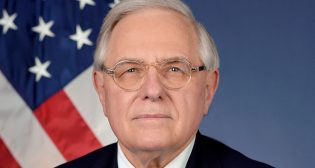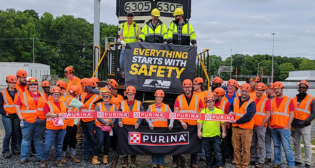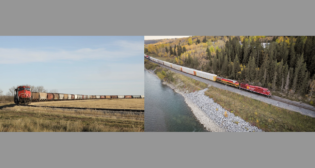
King Intermodal: An investment in the future
Written by AdministratorCoal has always been extremely important to the rail industry, as highlighted by its well-earned moniker “King Coal.” Indeed, the marriage between coal and the railroads was a natural one, with railroads being the best at bulk land shipping and coal being a widely abundant natural resource.
In contrast, intermodal started off in the early 1980s as “filler” traffic on the rail systems and was widely thought of as a business of limited profitability for the rail industry.
Fast forward to mid-2011, and it looks like the crown that coal has worn for so many years may need to be shared with the intermodal segment. More than once, intermodal surpassed coal in the past decade in revenues. The most recent figures available show that intermodal traffic grew by 14% compared to last year, vs. 4% growth for rail traffic in general. Intermodal is becoming more and more profitable for the railroads. This upward trend in profitability is a combination of improved productivity and a concentration on higher pricing. As railroads and their investors look to the future, both will expect intermodal to improve its profitability and continue to be a fast-growing major category among railroad carloadings.
Many factors have led to the success of the intermodal segment over the years, including rising fuel costs, massive capital investments by the railroads, and more consistent transit times. While higher fuel costs are not controllable, the latter two factors are very much at the discretion of the Class I railroads and go hand in hand.
Shippers and investors alike should be encouraged at the massive amount of investments the railroads are making, as they are on track to spend a record $12.6 billion on their networks in 2011. Obviously not all of this is geared toward intermodal spending, but there have been a lot of major projects, both completed and announced, that should help drive intermodal volumes going forward.
The most recent of these was CSX’s opening of its Northwest Ohio intermodal facility (part of the National Gateway). This state-of the-art facility will help improve transit times in some lanes by one to two days as freight bypasses CSX’s often congested Bedford Park and 59th Street Chicago locations and open up over 150 new origin-destination pairs. Other projects that have recently been completed or are in the process of construction are the Heartland Corridor, Crescent Corridor, BNSF’s Johnson County Kansas freight hub, and Union Pacific’s Joliet, Ill., intermodal terminal.
Intermodal pricing, in many instances, will find its ceiling at prices for over-the-road (OTR) truckload moves. In April of this year, both UP and Norfolk Southern raised intermodal rates for non-contract domestic customers by 8% and, by all accounts, are seeing strong retention. As long as railroads remain below the comparable OTR rates, we believe intermodal growth will continue. We would not be surprised to see them exceed OTR rates for short periods of time when truck capacity dries up but doubt that is a sustainable long-term event. (We note that at a recent shipper conference, a major intermodal shipper stated that this has happened in some lanes this year.)
Given the U.S.’s woeful track record of highway infrastructure investment, increasingly tighter trucking regulations, and high fuel prices, we believe more and more shippers will be drawn to the intermodal product. The rail industry should not miss its chance to grab a few proverbial brass rings, as long as it continues to invest in its intermodal product (we hope that the government sees fit not to curtail such investment with any unjust regulations).
We continue to advise investors who wish to have long-term transportation exposure in their portfolios to have intermodal exposure. Investors seeking stocks with stronger growth potential should note that we believe they will find the most intermodal growth east of the Mississippi and cross border (mainly Mexico) in the years to come.



